Can I Eat Peanut Butter on a Renal Diet?
Are you on a renal diet and wondering if you can still enjoy peanut butter? It is an incredibly delicious snack, but it’s not necessarily the healthiest choice for people with kidney-related conditions.
So what's the verdict, can you eat some when following a renal diet? You're in luck! In this article, we'll discuss everything you need to know about eating this food while on a renal diet.
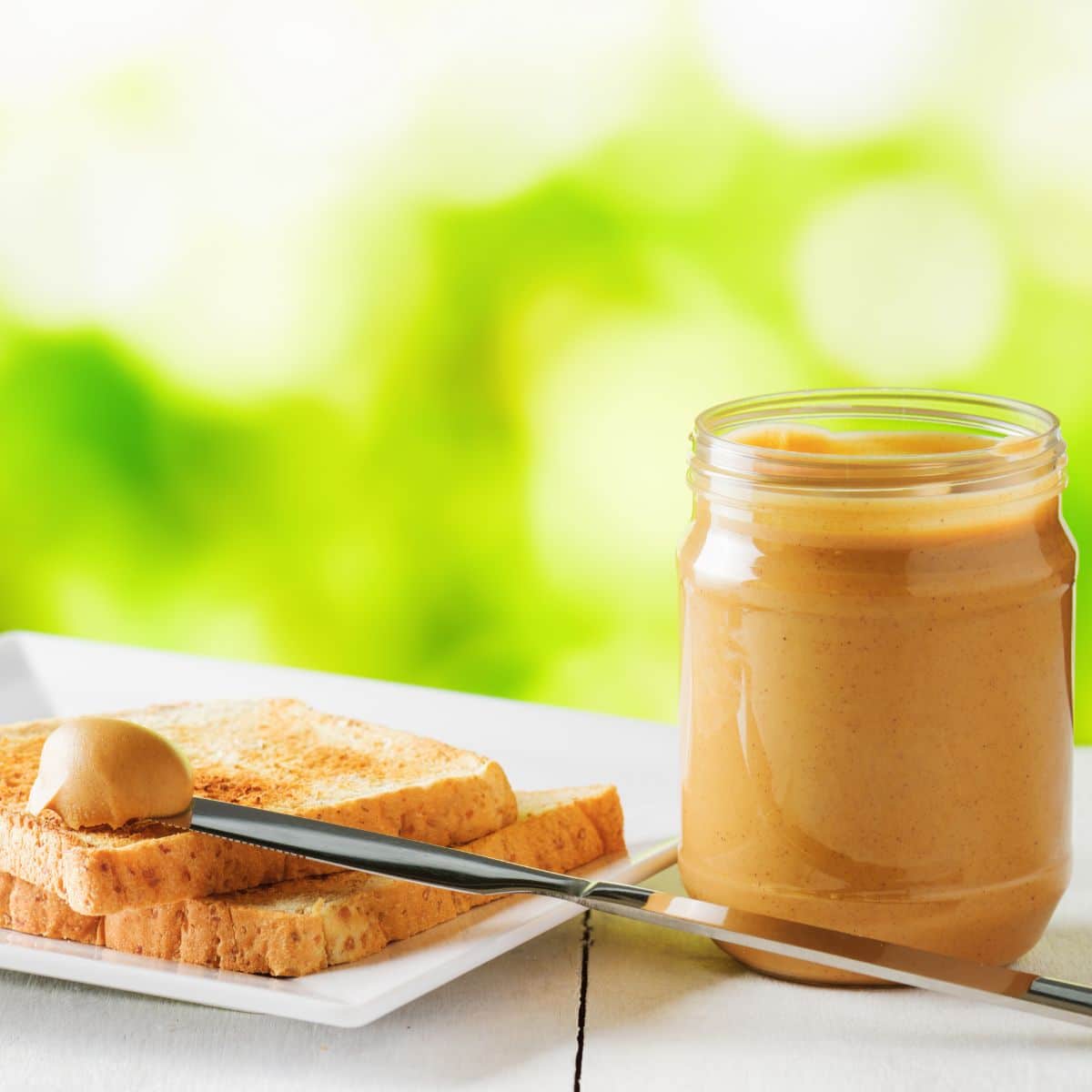
You may be aware that consuming too much protein or sodium can put strain on your kidneys, leading to poor overall health. But don't worry – there are ways to enjoy it without putting extra stress on your body.
We’ll explore how moderation and careful nutritional tracking can help make sure that you get all of the benefits of some tasty peanuty snacks without compromising your health.
At the end of this article, you should have all the knowledge you need to confidently decide whether or not adding some nutty goodness into your daily routine is right for you. So keep reading to find out more about integrating peanut butter (or other nut butters) into your kidney-friendly meals!
Jump to:
- Nutritional Profile Of Peanuts and Peanut Butter
- Potassium Content For Foods
- Is Peanut Butter High In Phosphorus?
- Alternatives To Peanut Butter
- Recommended Amounts Of Peanut Butter For CKD
- Incorporate Peanuts Into A Renal Diet Plan
- Can Diabetics Eat Peanuts?
- Impact On Blood Sugar Levels
- Are Organic, Natural, Or Unrefined Forms Of Peanuts And /Or Peanut Butter Healthier Options?
- Should People With Chronic Kidney Disease (CKD) Avoid Eating Nuts?
- FAQs About Peanut Butter
- Peanut Butter (And Other Butters) Are Good For CKD Patients
For More Recipes and Ideas --->> Get Your Free Meals and Recipes That Are Perfect for Pre-Dialysis Diets, Pre-Dialysis with Diabetes, or Dialysis Diets.
Nutritional Profile Of Peanuts and Peanut Butter
Peanut butter is a popular snack that can easily be enjoyed by people of all ages. It is also known for its nutritional value, containing healthy fats and proteins along with essential vitamins and minerals. It's a great answer to the question what can I eat for lunch on a renal diet?
When it comes to following a renal diet food list, the key question becomes whether it is a suitable option or not. To answer this question, we need to take a look at the potassium and phosphorus levels in this food.
Peanuts and peanut butter are both excellent sources of dietary protein and healthy fats, but the nutritional content of each varies significantly. Peanuts contain less calories per tablespoon than peanut butter, with approximately 80 calories per tablespoon compared to 94 calories per tablespoon for peanut butter.
Peanuts are also lower in protein, providing 3.5 grams per tablespoon, while peanut butter provides 4 grams of protein per tablespoon. Peanuts have about the same amount of fat as peanut butter, with 8 grams per tablespoon.
Peanuts contain 3 grams of carbohydrates, while peanut butter provides 3.5 grams per tablespoon. Peanuts have less sodium per tablespoon, with 1 milligram compared to 74 milligrams for peanut butter.
Is Peanut Butter High In Potassium?
Peanuts are also similar in potassium and phosphorus amounts, with 92 milligrams of potassium and 41 milligrams of phosphorus per tablespoon, compared to 75 milligrams of potassium and 250 milligrams of phosphorus for peanut butter.
Potassium plays an important role in maintaining normal blood pressure and keeping your heart functioning correctly; however, too much potassium can lead to complications such as hypertension and kidney failure.
Phosphorus helps build strong bones but excess amounts may cause calcium deficiency or interfere with kidney function when on a renal diet plan. Fortunately, it only has around 20-30 mg of phosphorus per tablespoon, making it safe for those who are trying to follow a low phosphorus diet and limit their source of phosphorus.
Looking for more foods to enjoy, check out these low potassium side dishes.

Daily Sodium Intake
It's important to be aware of the daily sodium intake for someone with kidney disease. The recommended amount is no more than 2000 mg per day. This is significantly lower than the average sodium intake for a healthy person.
To ensure that your loved one is not consuming too much sodium, it is important to read labels and to be mindful of the amounts of sodium or salt added to meals. Also, avoid processed foods and canned soups, as they tend to contain a lot of sodium. Check out these low sodium canned foods for CKD.
There are other ways to flavor foods without adding extra sodium. Herbs, spices, and citrus juices are great alternatives to salt. By taking these steps, you can help your loved one avoid excess sodium and stay healthy.
Potassium Content For Foods
Nut butters of any kind are a popular food item among many individuals, but for those on a renal diet they may be an off-limits option.
It's important to understand the potassium content of it before incorporating it into your meal plan. The potassium intake you are allowed will vary with your personal condition but excess potassium should be avoided.
When looking at how much potassium is in this food, you'll find that one tablespoon contains around 75 milligrams of potassium.
This means that if you are following a low potassium diet for kidney disease, eating more than two tablespoons could reach or exceed your daily limit for this mineral.
Here's a quick list of some other things to consider when trying to make sure peanuts remain part of your renal friendly meals:
- Read nutrition labels carefully - Pay attention to serving sizes and look out for added ingredients like salt or sugar which can increase the overall amount of unwanted nutrients per serving.
- Choose unsalted products - Reduced sodium and no salt versions have significantly less than salted ones; just ¼ teaspoon of salt adds over 250mg of extra sodium!
- Make swaps - If peanuts aren't allowed in your diet due to their higher phosphorus content, try swapping them out for another nut like almond or walnut butter instead.
- Try natural alternatives – Look for organic or all-natural brands with fewer additives and preservatives which tend to have lower levels of mineral nutrients (including potassium) than processed counterparts.
- Keep portions small - Even if you opt for low-sodium versions, remember that too much still has the potential to push up your total daily intake of potassium so it’s best served in moderation!
In summary, understanding the nutritional profile of foods in this category is essential when planning meals while on a renal diet since they can contain higher amounts of minerals such as potassium. Improving kidney function with diet can be achieved with some due diligence.
But by making smart choices like opting for reduced sodium or no salt varieties, keeping portion sizes under control, choosing natural alternatives, and reading labels closely. You can successfully enjoy nuts without compromising your health goals! Check out these tips for a low potassium diet!
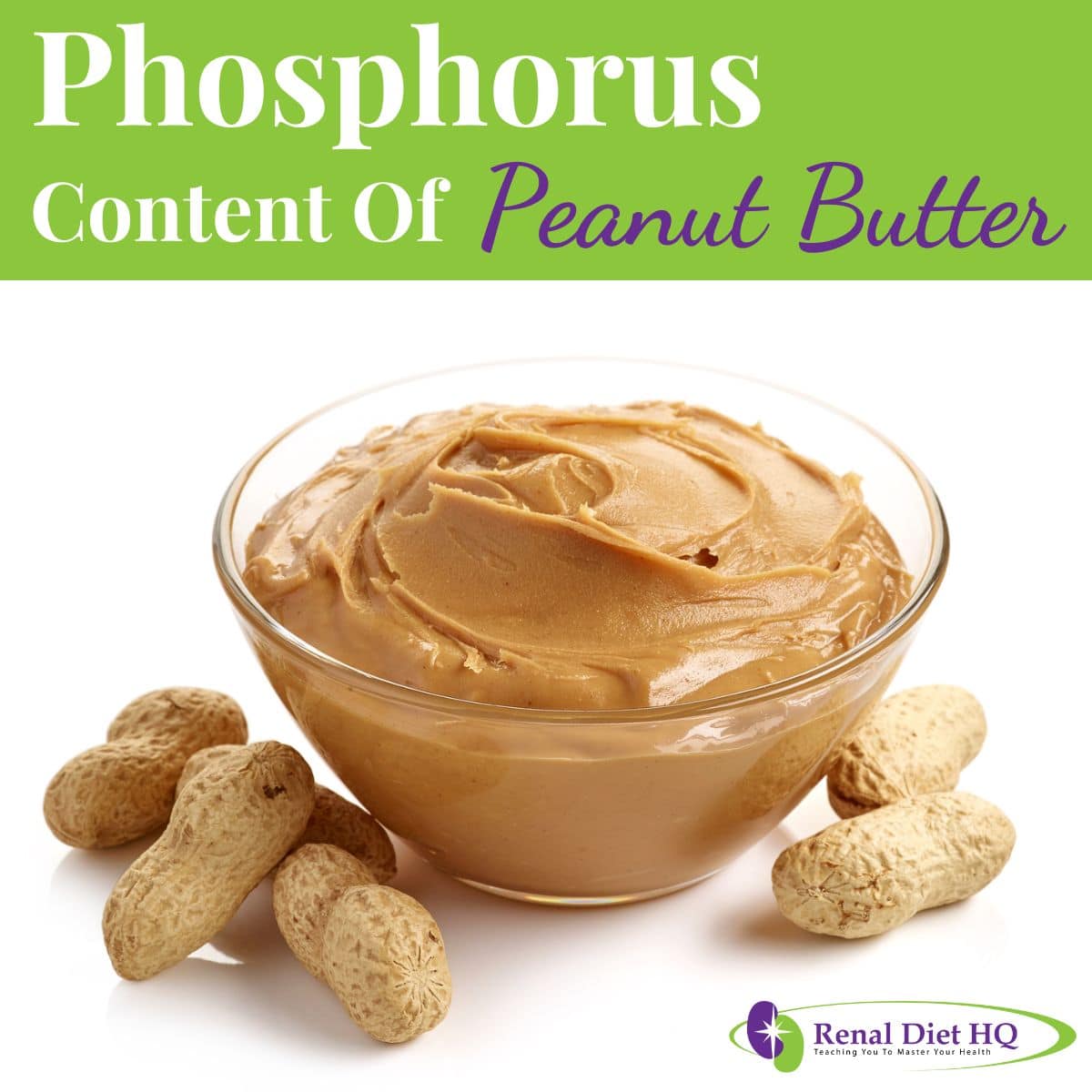
Is Peanut Butter High In Phosphorus?
Natural or homemade peanut butter usually contains relatively low levels of phosphorus. Commercial brands may contain added ingredients such as sugar, salt, hydrogenated oils, and preservatives which can add additional phosphorus content to the product.
Furthermore, some commercial manufacturers will also add vitamins and minerals including phosphates for extra nutrition. Therefore if you’re eating commercially produced products, then it could be higher in phosphorus than natural varieties and not be a low phosphorus food.
When looking for sources of phosphorus additives on nutrition facts labels, you should look for the ingredient “sodium phosphate” in the ingredients listings. This ingredient is a common source of phosphorus additives, and will usually appear as either “monosodium phosphate” or “disodium phosphate”.
You should also keep an eye out for other ingredients such as calcium phosphate, potassium phosphate, and tricalcium phosphate, as these are also common sources of phosphorus additives.
Some food products may contain phosphorus as an additive without explicitly listing it as an ingredient. In these cases, you should look for “phosphate” in the ingredient list, as this is a common abbreviation for phosphorus-containing additives.
It's important for people with kidney disease to monitor their intake of foods containing phosphorus as this nutrient can build up in the blood when the kidneys aren't working properly.
For individuals on a renal diet, it’s best to check food labels before purchasing store-bought products and opt for lower phosphate versions where possible to ensure they are buying kidney-friendly food.
It can also be beneficial to try out some homemade recipes using alternative nut butters such as almond or cashew instead of peanuts alone – they might provide an even lower level of phosphorus while still being delicious!
Alternatives To Peanut Butter
Nothing evokes a sense of childhood quite like the classic PB and J sandwich. But for those who wish to expand their sources of protein for managing their condition if they are wanting an alternative, either due to allergies or preference, you might find that there are some tasty options.
With a bit of creativity and determination, it's possible to create tasty, healthy meals that can help keep renal diet restrictions in check.
- Almond butter makes an excellent substitution in recipes or as a spread on toast.
- Not only does it provide healthy fats and protein, but its nutrient profile is also low in phosphorus, making it an ideal choice for those with chronic kidney disease (CKD).
- Almond butter has been found to contain more antioxidants due to its higher content of vitamin E and flavonoids.
For individuals with CKD looking for even lower-phosphorus options, sunflower seed butter is another tasty alternative that still offers plenty of nutrition.
This creamy spread is naturally rich in minerals like calcium and potassium while providing heart-healthy fat and plant-based proteins. Sunflower seed butter can easily replace peanut butter when spreading onto bread or added to smoothies for kidney health - offering delicious variety to any renal diet.
Almond butter and sunflower seed butter are both rich in nutrients and low in calories.
- A 2-tablespoon serving of almond butter contains about 180 calories and 7 grams of protein
- While the same serving of sunflower seed butter contains about 190 calories and 5 grams of protein.
- Both types of butter contain a variety of fats, with almond butter containing about 16 grams and sunflower seed butter containing about 14 grams.
- In terms of carbohydrates, almond butter contains about 6 grams while sunflower seed butter contains about 8 grams.
- Both types of butter are also low in sodium, potassium, and phosphorus.
- With almond butter containing about 5 milligrams of sodium, 60 milligrams of potassium, and 20 milligrams of phosphorus, and sunflower seed butter containing about 15 milligrams of sodium, 120 milligrams of potassium, and 25 milligrams of phosphorus.
| Nutrient | Almond Butter | Sunflower Seed Butter |
|---|---|---|
| Calories | 180 | 190 |
| Protein | 7 g | 5 g |
| Fats | 16 g | 14 g |
| Carbohydrates | 6 g | 8 g |
| Sodium | 5 mg | 15 mg |
| Potassium | 60 mg | 120 mg |
| Phosphorus | 20 mg | 25 mg |
Recommended Amounts Of Peanut Butter For CKD
Yes, you can eat peanut butter on a renal diet – but do so in moderation. Peanut butter is high in protein and fat and low in carbohydrates, which makes it an ideal snack for those with kidney disease.
However, individuals with kidney disease should limit their intake to about two tablespoons per day to be sure to manage nutrient intake for eating low carb low potassium foods.
For those who are looking for ways to increase the nutrient-density of their diet while managing kidney issues, there are several lower-potassium options available.
For example, natural types (without added salt) has less potassium than regular varieties. Almond and cashew butters have significantly less potassium compared to other nut butters such as walnut or pistachio. It’s important to read labels carefully before making a decision; some brands may add more sodium than others.
2 Tablespoon serving size comparison chart
| Butter Type | Calories (Kcal) | Protein (g) | Fat (g) | Carbohydrate (g) | Sodium (mg) | Potassium (mg) | Phosphorus (mg) |
|---|---|---|---|---|---|---|---|
| Peanut Butter | 188 | 8 | 16 | 7 | 148 | 153 | 99 |
| Almond Butter | 180 | 7 | 16 | 6 | 5 | 60 | 20 |
| Sunflower Seed Butter | 190 | 5 | 74 | 8 | 15 | 120 | 25 |
| Cashew Butter | 187 | 4 | 16 | 6 | 1 | 50 | 34 |
| Walnut Butter | 187 | 4 | 17 | 6 | 0 | 23 | 28 |
| Pistachio Butter | 177 | 5 | 16 | 6 | 0 | 114 | 85 |
| Low Sodium Peanut Butter | 190 | 8 | 16 | 6 | 70 | 90 | 70 |
When selecting a product that fits into your dietary restrictions and will help you manage your kidney function, consider portion size too--a tablespoon contains roughly 90 calories and 8 grams of fat.
Eating too much of even the lowest-potassium variety could lead to weight gain if consumed frequently or in large amounts.
To ensure you stay within your daily recommended amounts for protein intake and improving kidney health when snacking on peanuts, measure out one serving at a time and store leftovers away from temptation!
Incorporate Peanuts Into A Renal Diet Plan
For those on a renal diet, it can be difficult to figure out how to incorporate peanuts and/or peanut butter into their meal plan. Thankfully, there are some ways this is possible!
Is peanut butter high in potassium? Yes and no—it depends on the type of peanut butter you're eating. Natural or homemade varieties tend to have lower levels of potassium than processed types that contain added sodium and other preservatives. How many grams of potassium per day for a low potassium diet should I eat?
But even so, an individual should still limit their intake as too much potassium could cause problems for people with kidney disease.
Aside from natural peanut butter, there are also low-potassium substitutes available such as almond butter or cashew butter made with reduced salt content. These alternatives provide similar flavors without worrying about exceeding your daily recommended allowance of potassium.
If you're looking for something more savory try roasted unsalted peanuts which offer great flavor without any added sodium.
No matter what option you choose, making sure you stay within the parameters of your renal diet is essential when adding peanuts and/or peanut butter into your meal plan. Eating healthy doesn't mean sacrificing flavor; just remember to monitor portion sizes and always check labels before purchasing products!
Can Diabetics Eat Peanuts?
The good news is that chronic kidney disease and diabetes patients can usually eat peanuts and/or peanut butter as part of their meal plans. However, the amount consumed should always be monitored closely.
People with kidney disease or diabetes should also ensure they are eating varieties low in salt or sugar-free options as these will not aggravate either condition further. Eating a kidney friendly diet for diabetics does not have to be hard!
Peanuts contain healthy fats and help provide energy while staying within the limits of your renal diet guidelines. Peanut butter makes a great snack because it contains protein and fiber which helps keep blood sugar levels stable throughout the day.
It’s best to talk to your doctor before adding any new foods into your daily meals in order to make sure you’re getting all the nutrients you need without overdoing it on certain minerals like potassium and phosphorus found in some types of peanut products.
Eating peanuts and/or peanut butter can still fit into a balanced meal plan that takes your health conditions into account - just remember moderation!
Impact On Blood Sugar Levels
Peanut butter can be a good source of protein and healthy fats, especially as a snack for CKD and diabetes, but it is important to consider its impact on blood sugar levels. Eating peanut butter in moderation can help maintain your blood glucose levels if you have diabetes or are at risk for developing the condition.
Although peanut butter is generally considered safe for people with kidney disease, it’s best to check with your doctor before eating it as part of a renal diet. Is peanut butter bad for the kidneys? Generally speaking, no - however, consuming too much could lead to complications due to high potassium levels.
Can diabetics eat peanut butter and jelly? Yes, however, they should watch their portion sizes and avoid sugary jams and jellies that may spike their blood glucose levels rapidly and consider using low potassium bread.
Is peanut butter kidney friendly? Again, yes – but monitor portions closely and consult your doctor prior to adding this food item to your diet plan.
As long as you keep track of how much you’re eating, there shouldn't be any issues when having peanuts or other nut products occasionally as part of a balanced meal plan.
Are Organic, Natural, Or Unrefined Forms Of Peanuts And /Or Peanut Butter Healthier Options?
It is important to consider if organic, natural, or unrefined forms of peanuts and/or peanut butter are healthier options. The answer depends on an individual's dietary needs.
For example, these types typically contain higher levels of antioxidants and healthy fats which may reduce inflammation in blood vessels. They also tend to have lower sodium content compared to other varieties.
They provide a source of plant-based protein that can be beneficial for those looking to supplement their diets with alternative sources of nutrition or follow a renal vegetarian diet.
As such, organic, natural, or unrefined forms of peanuts and/or peanut butter could potentially be a good option depending on how much potassium and phosphorus someone needs in their diet.
Therefore, making sure you read labels carefully when choosing your product is essential for managing when you are an individual with kidney disease.
Should People With Chronic Kidney Disease (CKD) Avoid Eating Nuts?
People with chronic kidney disease (CKD) may be wondering if it is safe for them to eat peanuts and peanut butter. The good news is that although some nuts are high in protein, sodium, and phosphorus, which can affect blood levels—peanuts and peanut butter have moderate amounts of these nutrients, which makes them a safer option for CKD patients.
It's important to understand the nutritional content of peanuts and peanut butter before incorporating them into your diet plan. Peanuts make an ideal kidney friendly snack choice for people with CKD who need to watch their intake of those concerning minerals.
In addition, they provide beneficial monounsaturated fats which help lower cholesterol and heart-healthy omega-3 fatty acids which promote healthy cardiovascular functioning. As long as you don't overdo it on calories, eating peanuts or peanut butter can be part of a healthy diet when managing CKD.
Overall, individuals with CKD should consume nuts like peanuts and peanut butter in moderation as long as they consult with their physician about appropriate serving sizes based on their individual condition. Eating a few small servings per week could benefit your overall health without negatively affecting your kidney health.
FAQs About Peanut Butter
Peanut butter is one of the most amazing foods on earth! It's a delicious and nutritious treat that has so many health benefits, it could be considered a superfood. But what if you're on a renal diet for breakfast, lunch and dinner?
Could peanut butter still offer its nutritional advantages while being safe to eat? Absolutely! Eating peanut butter can bring numerous positive effects for those with kidney disease or other types of renal disorders.
For starters, peanut butter contains plenty of healthy fats, proteins, vitamins and minerals like magnesium, zinc, and folate. These nutrients all help support your overall health even when dealing with chronic kidney disease (CKD). Peanut butter also helps keep blood glucose levels stable thanks to its low glycemic index rating.
This means diabetics who have CKD may find eating peanut butter beneficial in helping them maintain their desired glucose level without raising their risk for high potassium levels or any other complications from the CKD.
Peanut butter is a great vegetarian substitute for meat or animal products in a kidney diet. Peanut butter is a high protein food that is lower in phosphorus,
potassium, and sodium, making it an ideal option for those with chronic kidney disease. Peanut butter is also free of cholesterol, making it a heart-healthy food.
Additionally, peanut butter is a great source of fiber, which is important for digestive health. Peanut butter can be added to a variety of meals, from smoothies to sandwiches, to provide a delicious and nutritious boost of protein.
The protein content found in peanut butter is especially helpful as it provides essential amino acids needed by those who suffer from CKD-related muscle loss and weakness.
Furthermore, the monounsaturated fatty acids present in peanuts help improve heart health which is particularly important since people with CKD tend to experience higher rates of cardiovascular issues due to their condition.
All these factors make consuming moderate amounts of peanut butter an excellent choice for those looking to get nutritious meals while managing their renal diet effectively.
Peanut butter is one of the most popular pantry staples in the world. The two main types of peanut butter available are smooth and crunchy. Both types of peanut butter offer a unique flavor and texture that appeals to different consumers.
When it comes to nutrition, the differences between crunchy and smooth peanut butter are quite minimal. Both types are a good source of protein, healthy fats, and vitamins and minerals like vitamin E, magnesium, and phosphorus. The main difference between the two is that crunchy peanut butter usually has a few more calories, due to the added peanuts.
When it comes to flavor and texture, however, the differences between crunchy and smooth peanut butter are quite noticeable. Smooth peanut butter has a creamy and smooth texture and a mild, sweet flavor.
It is great for spreading on toast, crackers, and other snacks. Crunchy peanut butter, on the other hand, has a crunchy texture and a slightly stronger peanut flavor. It is great for adding extra crunch and flavor to sandwiches, smoothies, and other dishes.
When it comes to deciding between crunchy and smooth peanut butter, it really comes down to personal preference. Some people prefer the mild flavor and creamy texture of smooth peanut butter, while others enjoy the extra crunch and robust flavor of crunchy peanut butter if you are following a meal plan for kidney disease. If you can't decide between the two, you can always opt for a “mixed” variety that combines both types.
Peanut butter is a tasty snack that many of us enjoy, but it can have an effect on our blood pressure if consumed in excess. It's important to understand how peanut butter affects our body before adding it into your diet.
The main factor affecting how much impact eating peanut butter has on one’s blood pressure is the amount of salt one consumes with it. Peanut butter contains potassium which helps keep blood vessels flexible and lowers hypertension.
However, when paired with too much sodium, its positive effects are mitigated or completely eliminated as salt increases the risk of high blood pressure. People who already suffer from hypertension should consider limiting their consumption of salted peanut butter and other salty food items such as chips and processed meats.
Eating unsalted or low-sodium peanut butter can actually help improve cardiovascular health by lowering bad cholesterol levels and improving overall heart function.
Furthermore, consuming moderate amounts of natural nut butters like almond and cashew can also reduce LDL (bad) cholesterol while raising HDL (good) cholesterol levels due to their healthy fats content.
These beneficial fats found in peanut butter increase satiety so people eat less throughout the day, resulting in weight loss which further aids in reducing hypertension readings over time.
For people with kidney disease, it can be difficult to decide which foods are best for their diet. You could always try the renal vegetarian diet. Fortunately, there is an alternative: roasted peanuts and peanut butter. But the question remains; which one should patients with kidney disease choose?
When comparing these two options, it’s important to consider how much protein they each contain. Peanuts have about 10 grams of protein per 2 tablespoon serving, while peanut butter has 8 grams.
This difference may seem small, but it could make a big impact on someone watching their dietary intake. When measuring in terms of calories and fat content, roasted peanuts come out ahead as well.
So what does all this mean? In short, if you're looking for an option lower in protein and fat than peanut butter, then opting for roasted peanuts might be a better choice.
They provide fewer calories and less fat overall compared to their nut-butter counterpart. Of course, before making any major changes to your diet, always consult your healthcare provider first, they know best!
Peanut Butter (And Other Butters) Are Good For CKD Patients
The benefits of including peanut butter in following a pre-dialysis renal diet can be great. It is low in potassium and phosphorus, has healthy fats and proteins, and can even help to reduce blood pressure levels for those who consume it regularly.
With that said, people with kidney disease should always consult their physician or dietitian before adding any type of food to their diet.
For me personally, enjoying a spoonful of creamy peanut butter as part of my daily routine serves as a reminder that I need to take care of myself and nourish my body properly while still having fun. Peanut butter reminds me to appreciate life’s simple pleasures without feeling guilty about indulging in them every once in awhile.
Overall, eating peanut butter on your renal diet can have many positive benefits if done so responsibly. As long as you are conscious of portion sizes and mindful not to overdo it, then there’s no reason why you shouldn’t enjoy this delicious treat!





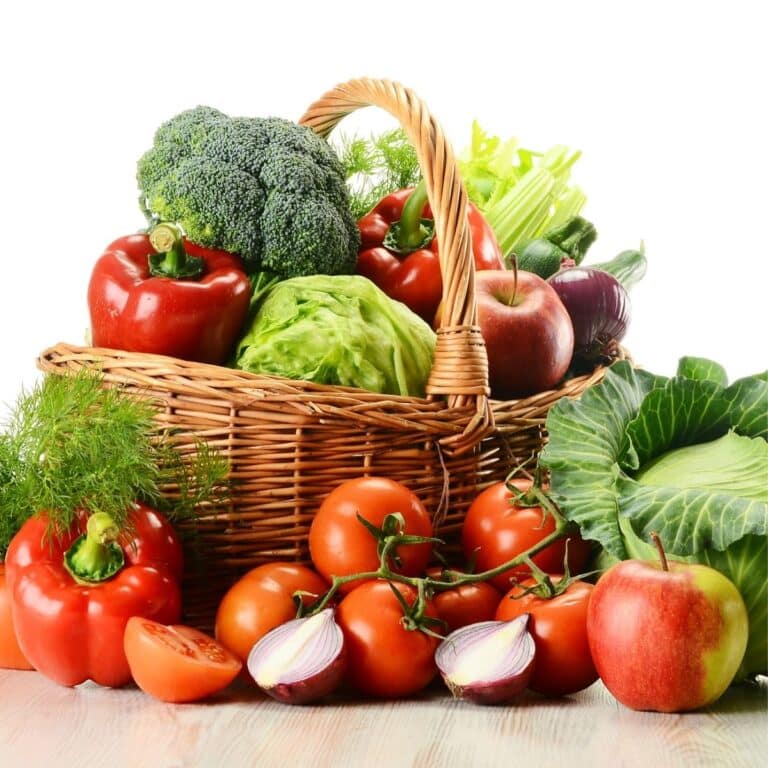
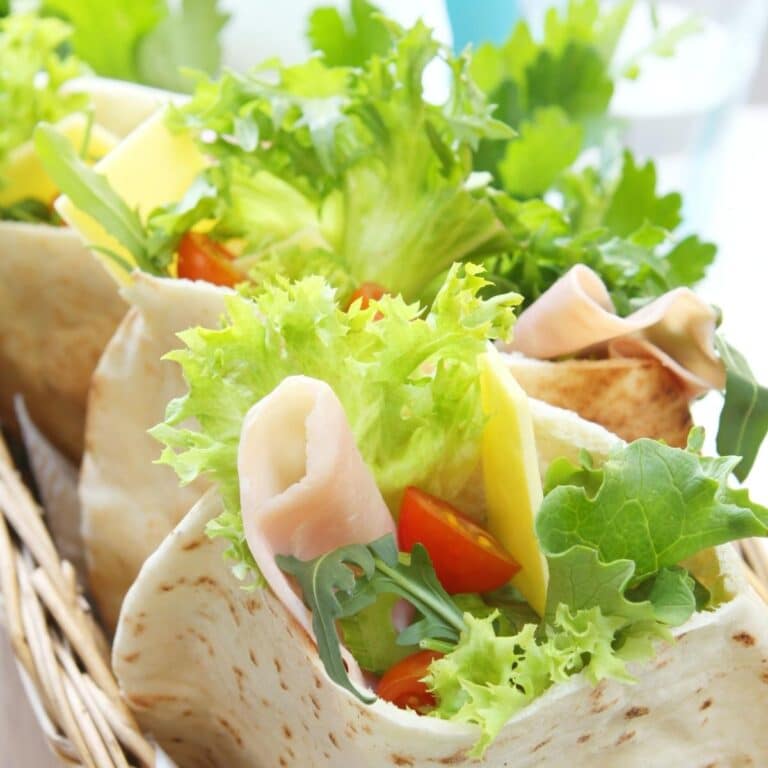
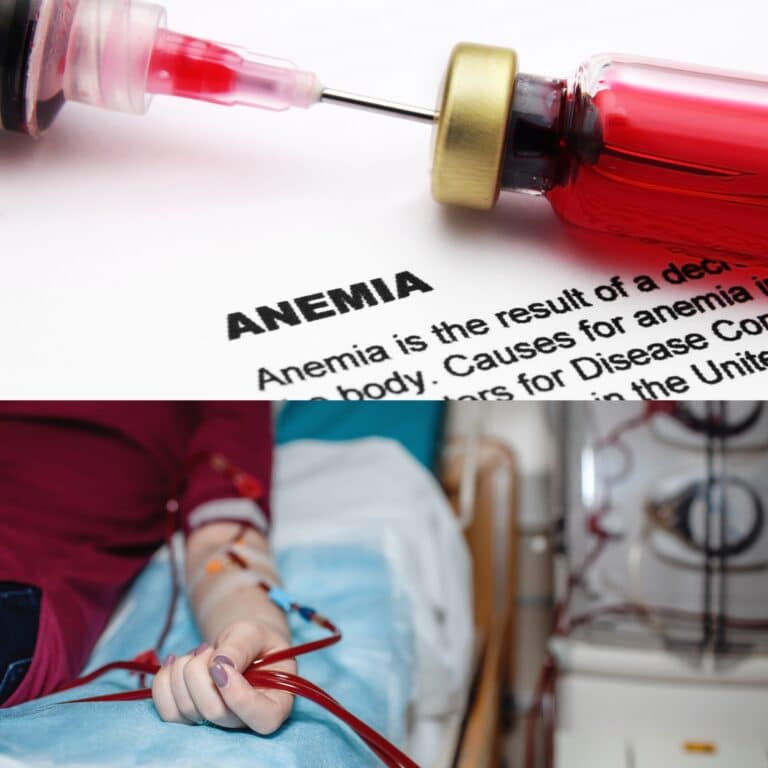
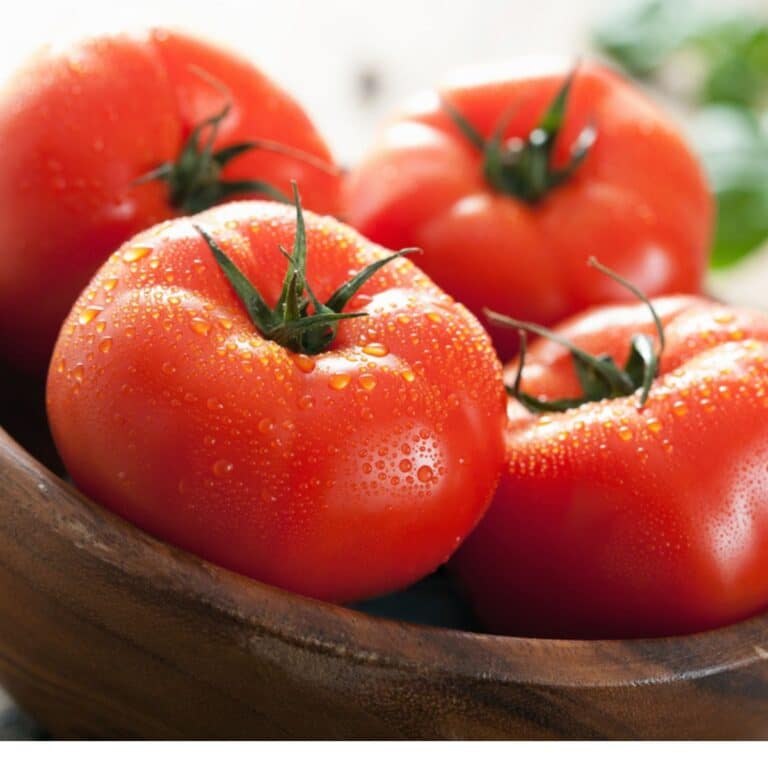
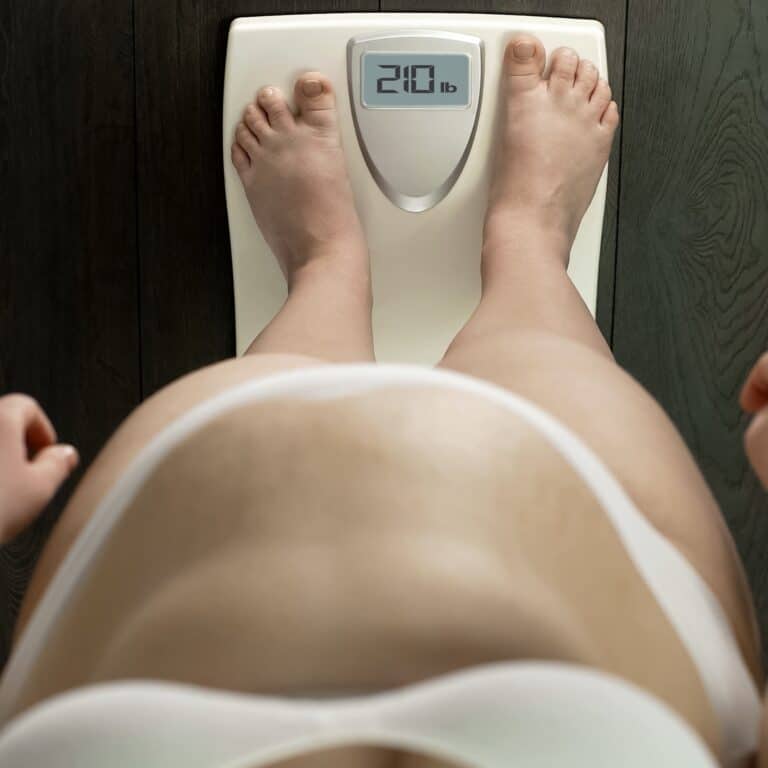
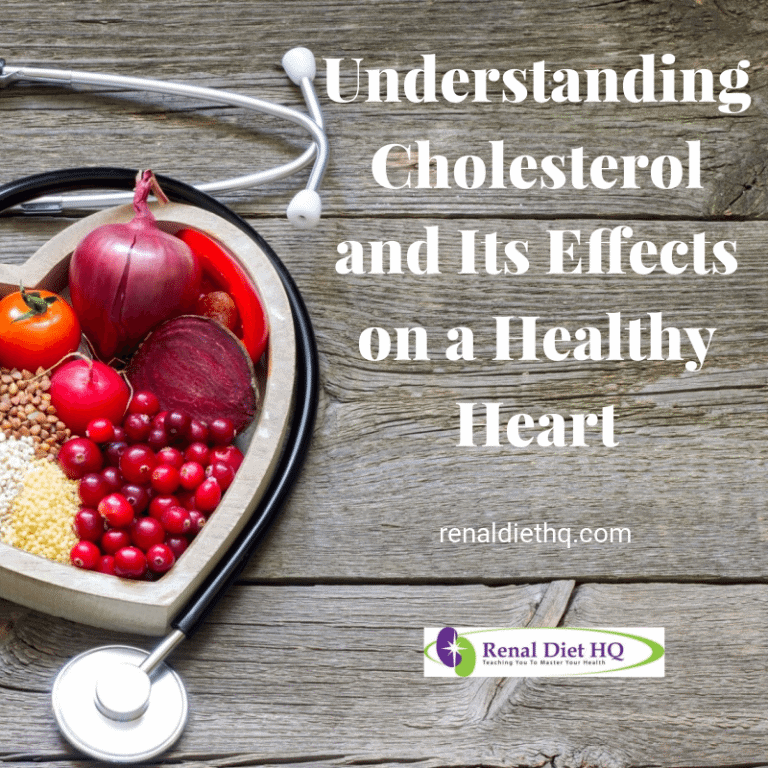


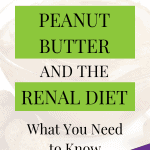


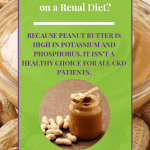
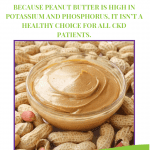
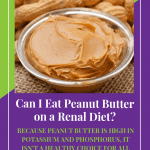
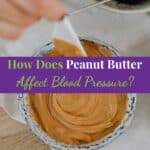


But almonds are extremely high in oxalates which directly contribute to calcium-based kidney stones.
What to eat and not eat
My husband has CKD creatine 2.37; insulin dependent diabetic, and recent heart attack with CHF. Do you have suggestion for website or book that would deal with all 3 problems? Thanks